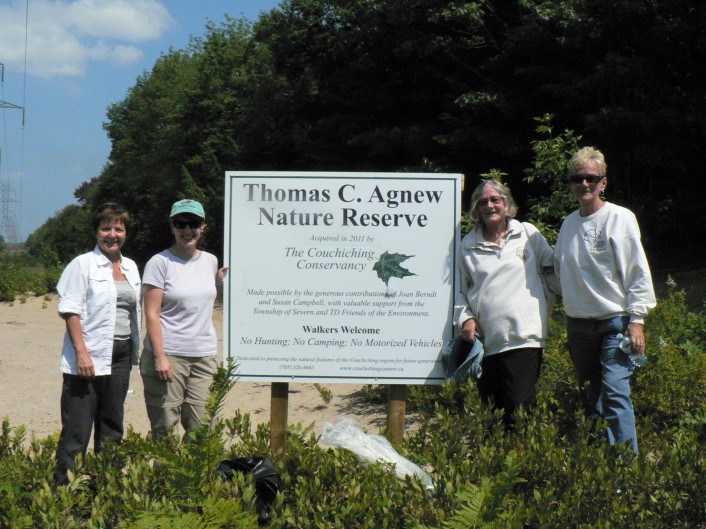The concept of a land trust came to this region in the early 1990s when a handful of motivated people were looking for new ways to preserve wilderness areas. Traditionally, society had relied on governments to set aside parks and reserves, but with shifting political priorities and scarce financial resources, that system was increasingly inadequate. The group that formed The Couchiching Conservancy wanted to take matters into their own hands. Forming a non-profit, non-government charity, they began to collect parcels of land. These patches of wilderness are held in trust for the public, and in many cases they are available for public use through walking trails. These natural areas provide habitat for a host of animals and plants that are now under extreme human pressure in central Ontario. A least 16 local species are in danger of disappearing altogether.
But how does the Conservancy acquire the land?
There are several ways of doing it.
Sometimes property is donated directly to the Conservancy by owners who want their land to be left as wilderness long after they are gone. There are big tax advantages to donating pieces of wilderness to charity, and such philanthropists can continue to enjoy their property in its natural state once the donation is made.
Grant’s Woods on Division Road near Orillia was donated by Bill Grant in memory of his brother Jack. It now serves as the headquarters of The Couchiching Conservancy and offers close to five kilometers of hiking trails for public use.
Sometimes a full donation is not practical, so landowners make a part donation of the property, receiving tax benefits. The Conservancy raises the remainder of the market value price of the property to complete the transfer through partners and fundraising campaigns.
The third way the Conservancy protects land is through conservation easements. An easement is an agreement negotiated with the landowner and placed on the title of the property. Working together, the Conservancy and the owner set out a series of restrictions for uses on the property meant to preserve its natural features. But ownership of the property remains with the donor, and when the property is sold, the restrictions of the agreement remain active. The market value of the property is reduced when an easement is placed on the title, and this is where the tax advantage kicks in for the owner. The market value is calculated before the easement is placed on the property, and after the easement is in place. The owner then receives a tax credit for the difference. For instance, if a property is worth $100,000 before the easement is placed on it, and $80,000 once the easement is on the title, the owner receives a tax credit for $20,000. There are further tax advantages once the property is protected. The Conservancy then has the responsibility of working with the landowner to ensure the restrictions are respected. This options is becoming increasingly popular among landowners who care about conservation. The Couchiching Conservancy currently has 10 conservation easements under its management.
Finally, the Conservancy will sometimes buy a particularly significant property outright, working with partners and supporters to raise the funds for the purchase.
Using these techniques, the organization and its partners have protected more than 12,000 acres – an area bigger than the City of Orillia.
Written by Mark Bisset, Executive Director.
This article was featured in The July edition of The Villager. Read more here.

